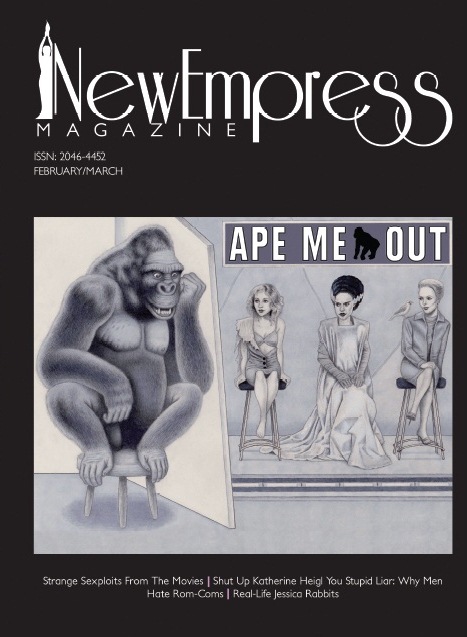
Florence Lawrence is largely forgotten today even among established icons of the early years. Yet she deserves hallowed status. Miss Lawrence was the first of a well-known kind: the movie star. She was both a pioneer and a subsequent victim of Hollywood. That such a path could unfold from the off is almost spooky. A highly intelligent and forthright woman, several major events conspired against her. An incandescent popularity waned as quickly as it had sparked.
Did the public have an active part in the invention of the ‘star system’, as it would be called, through their inquisitive nature and fixation with performers? Canny producers certainly leapt on audience curiosity and developed an industry standard that catered to popular taste and obsession. ‘Film stars’ are vitally important to the selling of a motion picture in 2013 as they were in 1913. ‘Selling’ a movie is the name of the game. Fronted by ‘names’ the adoring public wanted to see, actors and actresses became a ‘type’ and pictures became standardised into vehicles for them.
The US industry’s formative years were dominated by the tyranny of the General Film Company, actually a trust of cronies that wished to rule with an iron fist, and known as the MPCC (Motion Picture Patents Company). Partly for business reasons and partly due to snobbery, they refused their actors performance credits. It was a weak attempt to stop players from having leverage and a shot at fame. Theatre stars had their acolytes, for sure, but cinema would achieve new heights all together.
Lawrence moved from Vitagraph to Biograph and was dubbed ‘The Biograph Girl’. She earned $25 dollars per movie. Working in film wasn’t particularly respectable back then. She was a vaudeville starlet from a young age and billed as ‘Baby Flo, the Child Wonder Whistler’. She made over 100 films for Edison, Vitagraph and Biograph before taking up a contract with Carl Laemmele’s IMP, thus entering screen history.
The future, however, was not bright and her appeal not ever-lasting. An accident on the set of The Pawns of Destiny (how’s that for a tragically ironic title?) and a bad marriage helped derail her status. In 1938, aged 52, and having suffered financial hardship and an abusive second marriage, Lawrence committed suicide by eating poison meant to kill ants.
In 1910 Carl Laemmele, chief instigator of the ‘star system’, took Florence over to his pre-Universal outfit IMP (Independent Motion Picture Company). What he did next was a stroke of marketing genius. If you think PR stunts and tactics are crazy today, they’ve got nothing on Laemmele!
On March 12th 1910, the burgeoning mogul took out an advertisement in Movie Picture World denouncing the horrid rumours that the beloved Biograph Girl, Florence Lawrence, had not been killed in an automobile crash. The letter was released under the self-serving headline “We Nail a Lie”. As Richard Griffith and Arthur Meyer note in The Movies (1957): “Laemmele had planted the original story himself and his “reply” to it was designed solely to dramatize the fact he had lured the then most popular personality in motion pictures from her original employers: the Biograph Girl became the Imp Girl.” By 1912 she was earning $500 dollars a week, an astronomical sum.
If we look at images of her today and surviving one-reelers, Lawrence appears as a Victorian doll, a cultural hangover as one century merges into another. People clearly found her sexy and Laemmele once noted she had “sensational bubbies”. From such a typically sleazy comment, we can denote that even in 1910, sex appeal in the movies was important. It’s tempting to see the actress as a sort of proto Mary Pickford-style star, even though they were working, more or less, at the same time and for the same company, Biograph. However her fellow Canadian would go onto iconic acclaim and earn the moniker ‘America’s Sweetheart’. Lawrence fell by the wayside.
Lawrence is distinctly fixed in a late 19th century look, which seems a world away even from early screen sirens such as Gloria Swanson, Pola Negri or Vilma Banky. She would be overtaken by comediennes such as Mabel Normand and then more sophisticated Jazz Age figures. But we do not need to turn her into an overt victim. She was successful, had piles of money and other interests beyond cinema, until the 1929 Wall St. Crash wiped her out. No, she’s not the patron saint of damaged actresses. (That might be Frances Farmer or Marilyn Monroe.)
Her grave marker, placed in 1991, decades after her death, by the National Film Preservation Board said it all: “The Biograph Girl, the first movie star”.












